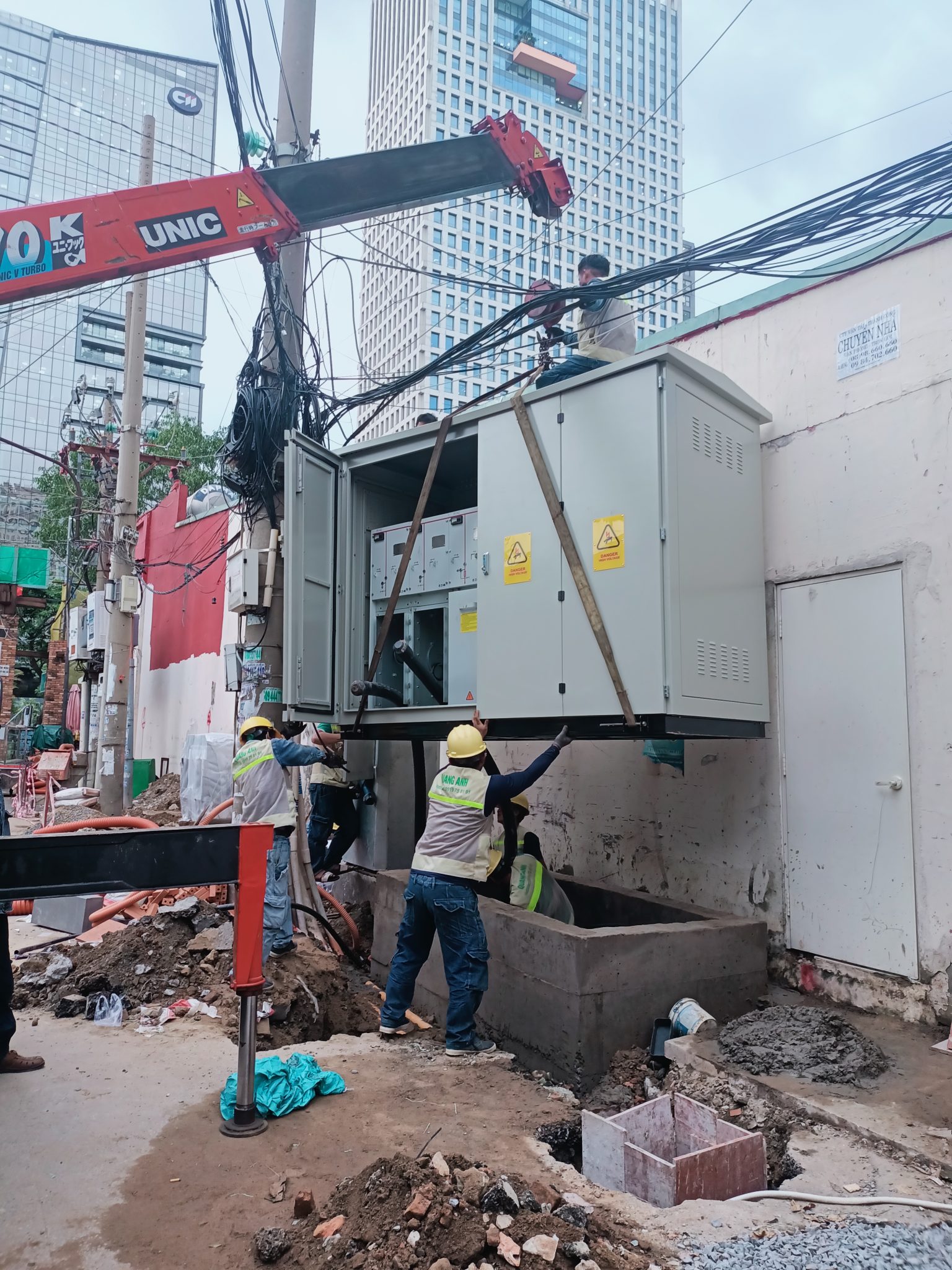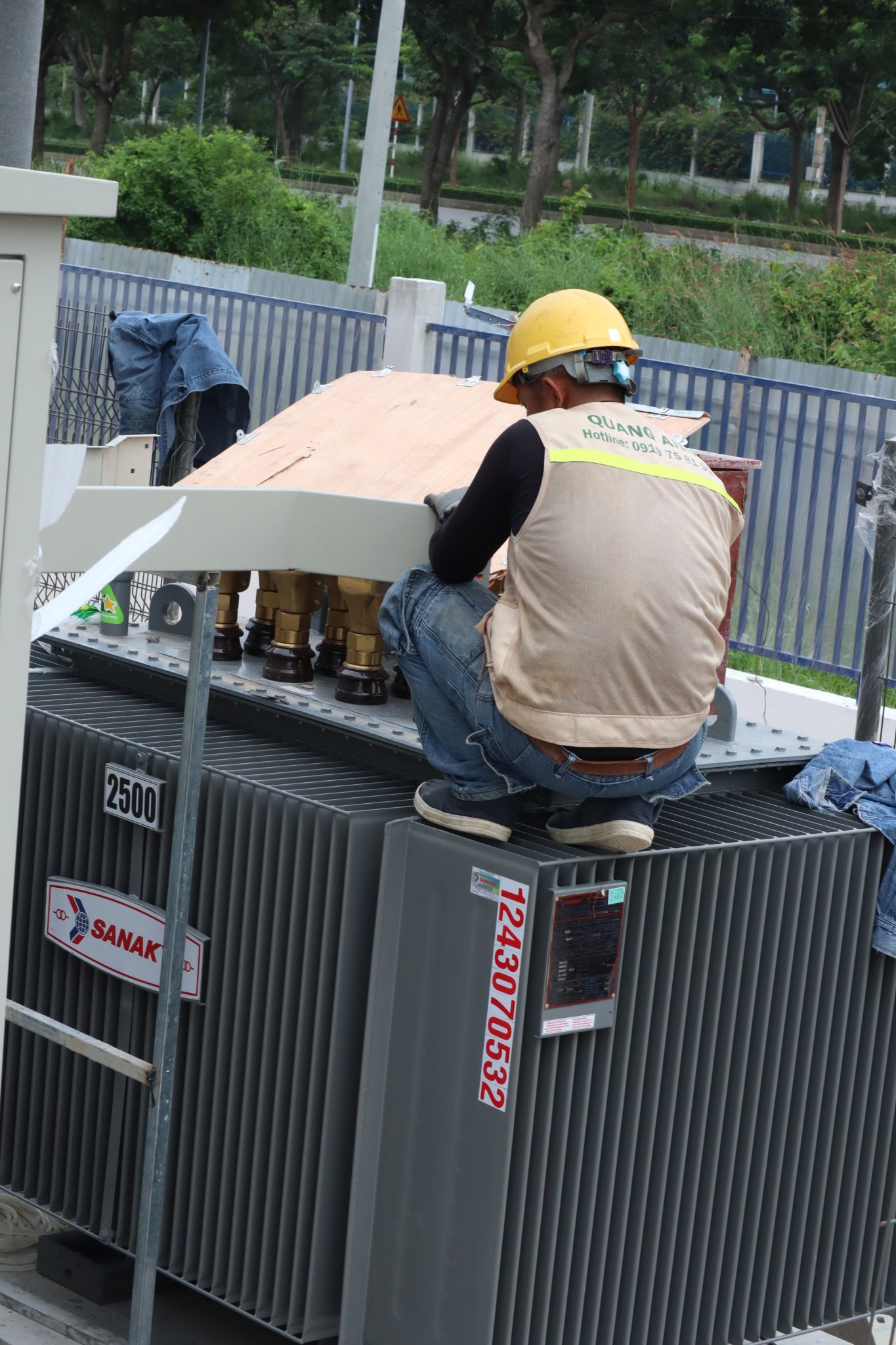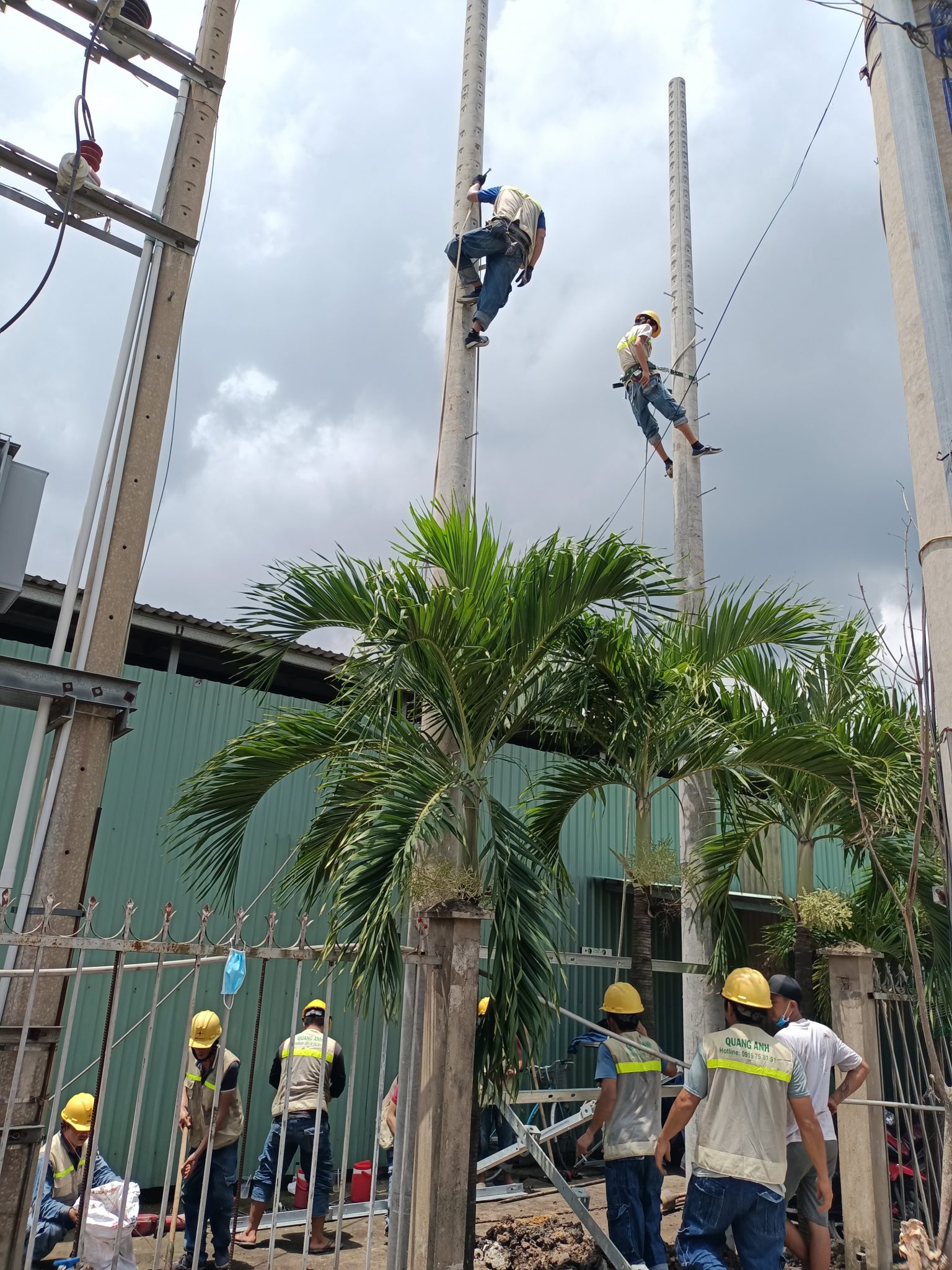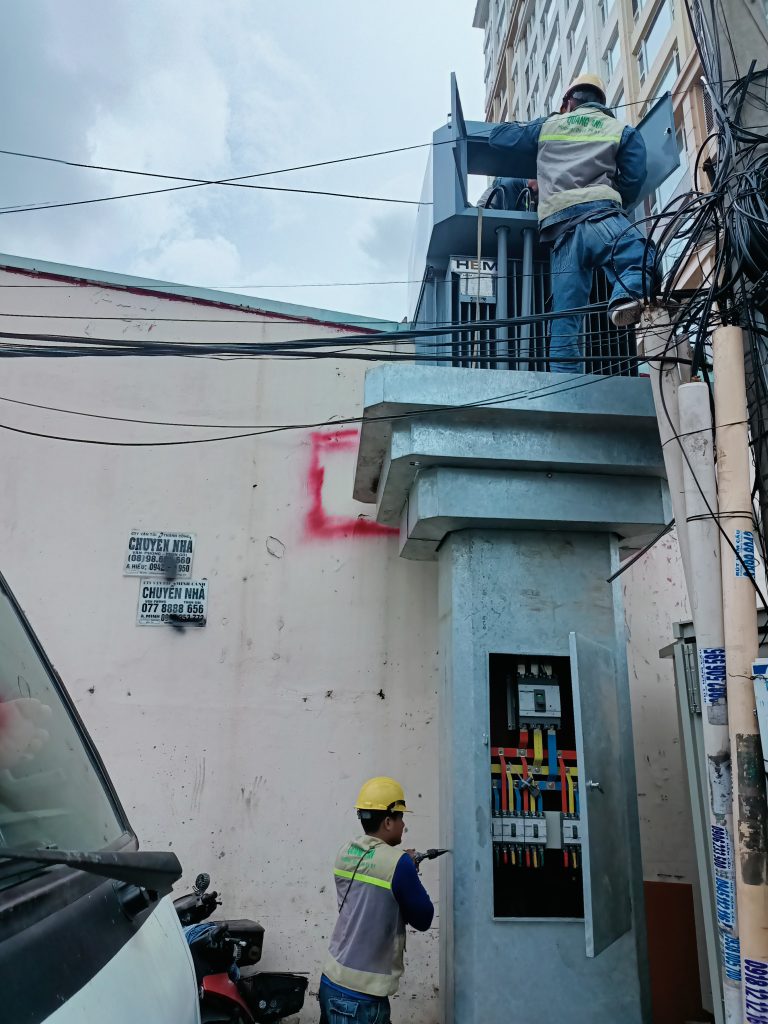News
Factory Electrical Installation: Process and Optimization
Factory electrical installation is a complex process that involves several important steps to ensure the electrical system operates safely and efficiently. This process requires professionalism from survey, design to installation and system inspection.
Factory Electrical System Installation Process
Factory electrical installation includes steps such as surveying and designing the electrical system. This process demands precision from positioning equipment, calculating energy needs to adjusting designs with real construction conditions. Particularly, the installation of cable trays and conduit pipes are essential stages to protect and arrange wires scientifically, ensuring system efficiency and cost savings.
Equipment Preparation
- Before installing electrical cables, necessary equipment such as transformers, suitable conductors, electrical cabinets, system protection devices, signal lights, and products from leading brands like Cadivi, Schneider, ABB, Mitsubishi should be prepared.
Survey and Design
- Surveying the site helps engineers clearly understand the requirements and installation locations.
- Industrial electrical design must adhere to technical standards and specificities of each enterprise, including substation locations, generators, and auxiliary oil tanks.
Main Power Cable System Construction
- Proceed with installing the power cable system from the substation to MCCB (ACB) and to the main distribution electrical cabinet (MSB).
- Choose between overhead or underground construction based on industrial electrical safety requirements and investor preferences.
Cable Tray Construction
- The installation of cable trays helps protect electrical conductors from environmental factors and ensures the electrical control system is scientifically organized.
Installation Construction
- Install factory electrical equipment according to the design drawings, ensuring safety and technical compliance.
Inspection and Completion
- Inspect the system after completion to ensure all devices operate safely and efficiently.
- Complete and hand over the project to the investor.
Key Factors
- Industrial electrical safety and equipment quality are essential to ensure reliable operation and long lifespan.
- Construction on schedule to avoid disrupting factory production activities.

Safety Factors in Factory Electrical System Installation
Electrical safety is a top priority in the construction process. To ensure labor safety, employees must be provided with specialized protective gear and strictly follow regulations. At the same time, the electrical system must be designed and installed in compliance with safety standards to prevent fire and electrical accidents.
Installing an electrical system in a factory requires absolute attention to electrical safety, not only to protect human lives but also to ensure the sustainable operation of machinery.
- Labor Safety
- Risk Assessment: To effectively manage risks, it is necessary to clearly identify areas with high accident potential such as production areas, storage areas, and passageways.
- Compliance with Regulations: Adhering to labor safety regulations and standards, including TCVN 7447-5-51:2010 equivalent to IEC 60364-5-51:2005, is mandatory to ensure safety for people and property.
- Design and Installation
- Optimal Electrical System: An optimally designed electrical system not only provides stable electricity but also helps prevent overloads and failures.
- Safety Devices: Use electrical devices from reputable brands like ABB, Schneider to meet international safety standards and improve electrical safety during operation.
- Management and Inspection
- Regular Inspection: Conduct regular system and equipment inspection to detect potential issues early, minimizing risks.
- Damage Handling: Damage needs to be immediately repaired to prevent electrical hazards.
- Lighting System
- Ensure Adequate Lighting: A good lighting system not only improves working conditions but also helps prevent unfortunate accidents due to lack of light.
- Safety Skills Training
- Employee Training: Providing electrical safety training programs helps employees recognize and promptly handle emergency situations in the factory.
Integrating and properly implementing the above factors will help optimize the electrical system installation process, creating a safe, stable, and efficient working environment.

Optimization and Cost Savings in Electrical Installation
Using industrial electrical system design software helps optimize design and minimize material costs. Choosing quality materials such as uPVC pipes for cables helps save costs while ensuring the durability and safety of the system.
To optimize and save costs in the electrical installation process, the first thing to do is to accurately determine the system’s electricity usage needs. This not only helps select the correct capacity for the solar power system but also avoids waste and increases economic efficiency.
An optimal solar power system needs to be chosen to suit environmental conditions and usage needs. Currently, there are two common types of solar power systems: grid-tied and off-grid.
- Grid-tied System: Suitable for areas with grid connections; you can sell excess energy back to the electric company.
- Off-grid System: Uses batteries to store energy, suitable for places without grid connections.
The installation location also greatly affects the performance of the solar power system. In Vietnam, installing the system facing south and avoiding obstacles such as trees or tall buildings will help optimize the energy collected.
Using energy-saving devices like LED lights or smart devices is an effective way to reduce electricity consumption costs. This, combined with storing energy with solar batteries for nighttime use, will help maximize benefits from this clean energy source.
Installation costs can be optimized by choosing high-quality devices and evaluating system performance both before and after installation. For example, using devices from reputable brands like Mitsubishi, Schneider will ensure stable and long-lasting system operation.
A critical factor to mention is the support policies from the government or organizations for solar power system installation. Taking advantage of these incentives can significantly reduce initial investment costs.
Finally, calculating operational and maintenance costs in the long term must be carefully considered to ensure that the long-term economic benefits are feasible. In addition, researching and applying new technologies in electrical system installation also plays an essential role in significantly increasing performance and reducing costs.

The factory electrical installation process brings many technical and strategic benefits. Cost optimization, ensuring safety and efficiency for the electrical system are crucial factors supporting sustainable development.
To ensure your factory’s electrical system is professionally and safely installed, contact QuangAnhcons – Hotline: +84 9 1975 8191.
QuangAnhcons provides professional factory electrical system installation services, ensuring efficiency, safety, and cost optimization for businesses.

 Tiếng Việt
Tiếng Việt 简体中文
简体中文 Deutsch
Deutsch 日本語
日本語 한국어
한국어 ไทย
ไทย Русский
Русский Français
Français
